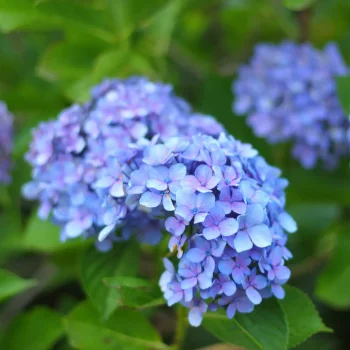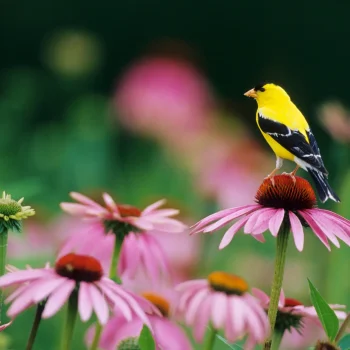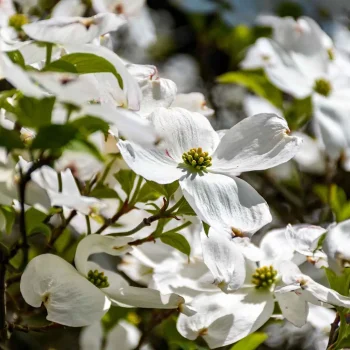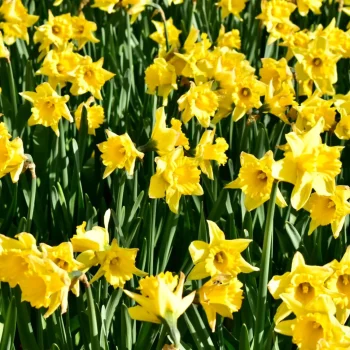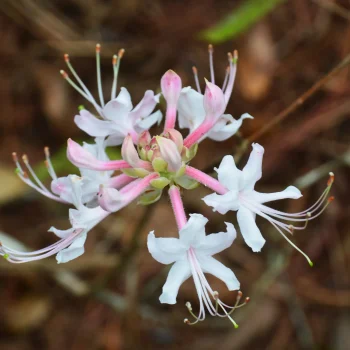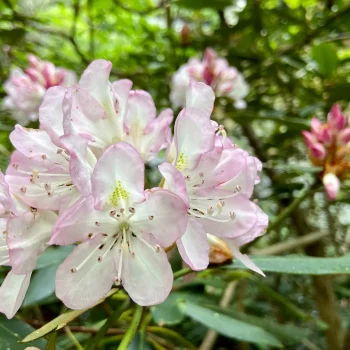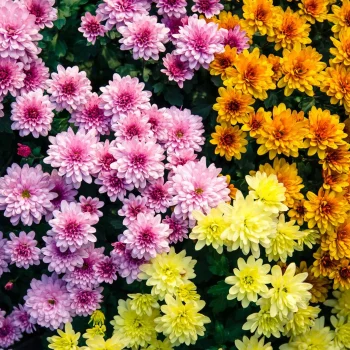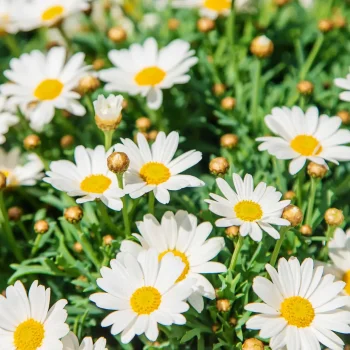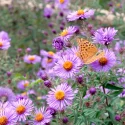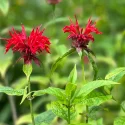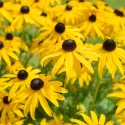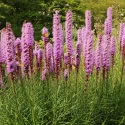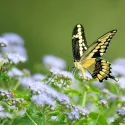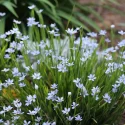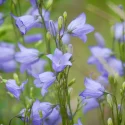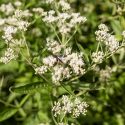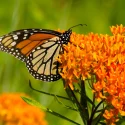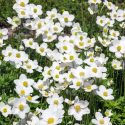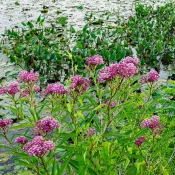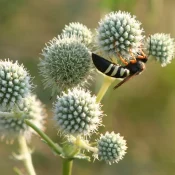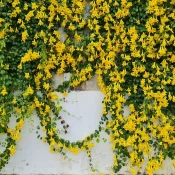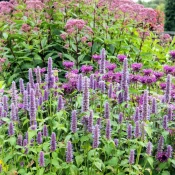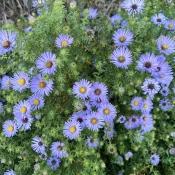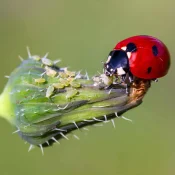15 Common garden plants: which plants are native?
As you dive into the world of native plants, it’s natural to start asking questions: What’s truly native in my garden? Are tulips native? Where do boxwoods come from?
In this article, we’ll explore 15 popular landscaping plants to find out whether they’re native—or not. And if they’re not, we’ll also uncover whether they’re considered invasive. Let’s take a closer look at common choices in American yards and see how they measure up.
Before we dig into the list, let’s briefly answer an important question:
What is a native plant?
A native plant has grown naturally in an area for hundreds, thousands, or millions of years. They thrive with no human intervention. Native plants are perfectly adapted to the local weather, climate, and soil of their home area—better than any imported plant could ever be.
Native plants also bring incredible hidden benefits:
- They’re the most resilient choice for our yards, especially as climate change impacts our weather.
- When planted in the right conditions, they need little maintenance.
- They play a crucial role in supporting iconic wildlife like butterflies, hummingbirds, and songbirds.
Simply put, native plants are always the best choice for our gardens and landscapes.
Native plants took a backseat—time to bring them back
In the past, landscaping trends often overlooked native plants in favor of introducing new and exciting species from around the world. These exotic plants brought beauty and novelty to North American gardens but, over time, have replaced many native species.
While some have adapted well, others have unintentionally disrupted local ecosystems. The worst offenders are designated invasive—plants so aggressive at reproducing that they outcompete and overwhelm native species.
Now that we’ve covered what makes a plant native or invasive, let’s see how common garden plants stack up.
Common garden plants: native or not?
Here are fifteen popular plants found in most American landscapes. You might find some surprises in terms of what is native or not:
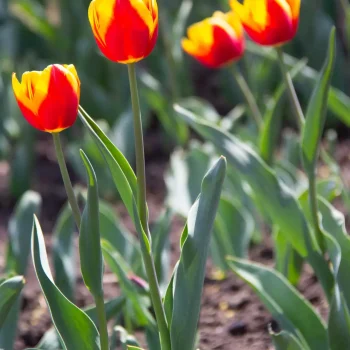
Tulips
Tulipa species
Origin: Not native. Tulips are native to Turkey and Central Asia. (I know—it’s a shock to find out they’re not native to the Netherlands or Europe.)
Invasive? No. Tulips are a beloved springtime plant but don’t spread aggressively or harm local ecosystems. It’s easy to keep tulips in check—you simply dig up the bulbs.
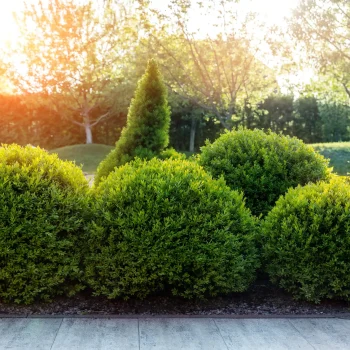
Boxwoods
Buxus species
Origin: Not native. Boxwoods are native to Europe and Asia.
Invasive? No. Boxwoods are boring, evergreen, overused, and static—but they are not considered invasive in the United States.
Want a native evergreen shrub? Native rhododendrons are for you.
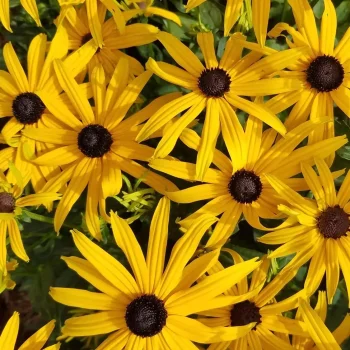
Black-Eyed Susans
Rudbeckia species
Origin: Native! Black-Eyed Susans are native to North America. 🥳
Invasive? No. These resilient, drought-friendly flowers offer blooms for 4-6 weeks and are not considered invasive.
Visit our Black-Eyed Susan profile for planting tips. Pair yours with sunny native favorites like coneflowers and milkweeds.
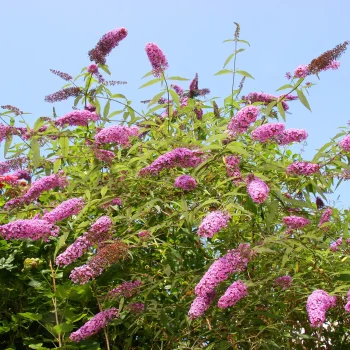
Butterfly Bush
Buddleja davidii
Origin: Not native. Butterfly Bushes are native to Asia.
Invasive? YES. In many states, Butterfly Bushes are considered invasive. This is because a single Butterfly Bush can create thousands of seeds. 🛑 🚫
Learn more in Are Butterfly Bushes Invasive? and visit our Best Native Plants for Butterflies for better alternatives.
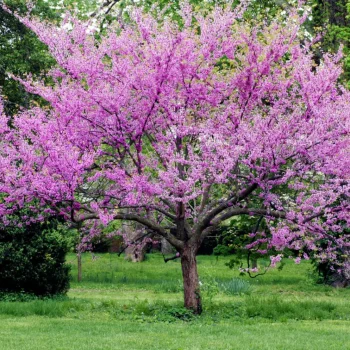
Eastern Redbud
Cercis canadensis
Origin: Native! Eastern Redbuds are native to almost the entire right side of North America.
Invasive? No. They are just gorgeous trees that help pollinators waking up from winter naps. They deserve a place in your front yard.
Visit our Redbud profile for planting tips.
Hydrangeas
Hydrangea species
Origin: It depends. There are four species of hydrangea native to North America.
What about the blue ones? The blue hydrangeas bigleaf Hydrangeas or Hydrangea macrophylla—are native to Asia.
Invasive? No. Hydrangeas are not considered invasive in North America, whether non-native or native.
Visit our Beginner’s Guide to Native Hydrangeas for more.
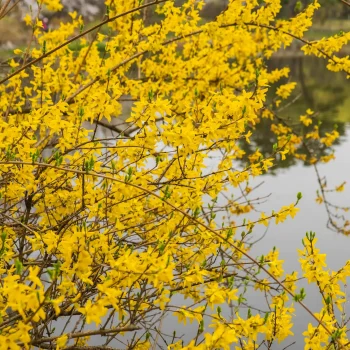
Forsythia
Forsythia species
Origin: Non-native. Forsythia is native to Asia and Europe.
Invasive? No. Currently, forsythia is not considered invasive in North America.
Good native replacements are Serviceberries, Witch-Hazel, and native azaleas.
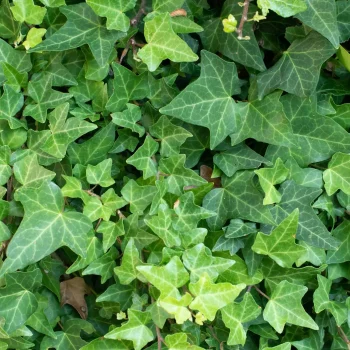
English Ivy
Hedera helix
Origin: Not native (the game kinda gives it away.) Native to Europe, Western Asia, and North Africa.
Invasive? YES. English Ivy quickly smothers other plants. Remove it ASAP if it’s in your yard. 🛑 🚫
Native vine replacements include Coral Honeysuckle and Carolina Jessamine.
Purple Coneflower
Echinacea purpurea
Origin: Native! Native to about 60% of the United States, from Maine to Texas.
Invasive? No. Purple Coneflowers are iconic, fuss-free pollinator favorites that also turn into bird feeders in the fall. A must for any sunny garden.
Read our Beginner’s Guide to Native Coneflowers for more.
Flowering Dogwood
Cornus species
Origin: It depends! There are 50+ dogwoods worldwide, about 12 species are native to North America. Visit our Beginner’s Guide to Native Dogwoods to meet the native options.
Invasive? No. Neither the native or non-native species of dogwood are considered invasive.
Read our Beginner’s Guide to Native Dogwoods for more.
Daffodils, azaleas, rhododendrons, mums, and daisies
Let’s close out our final plants with a speed round. Click or tap to find out which is native or not:
Are daffodils native?
Daffodils
Narcissus species
Origin: Not native. Daffodils are native to Asia, Europe and Africa—almost anywhere but the Americas.
Invasive? No. Daffodils are not considered invasive in any US state.
Want to plant another springtime replacement that is native? Visit our Beginner’s Guide to Native Lilies to meet some options.
Are azaleas native?
Azaleas
Rhododendron species
Origin: It depends. Over a dozen native azaleas are available for North American gardens. Sadly, few of these are used.
Invasive? No. Azaleas, whether native or not, are not considered invasive.
Read our Beginner’s Guide to Native Azaleas for more.
Are rhododendrons native?
Rhododendrons
Rhododendron species
Origin: It depends. The world is filled with thousands of rhododendrons, most are from Asia. Over a dozen native rhododendrons are available for North American gardens.
Invasive? No. Rhododendrons, whether native or not, are not considered invasive.
Read our Beginner’s Guide to Native Rhododendrons for more.
Are chrysanthemums (mums) native?
Chrysanthemums
Chrysanthemum species
Origin: Not native. Chrysanthemums are native to Asia and became a huge gardening fad in the 1800s.
Invasive? No. Chrysanthemums—although everywhere in the fall—are not considered invasive. But we should all be planting native asters instead.
Read our Chrysanthemums, Daisies, and Asters: What’s the Difference? and swap out mums for native asters.
Are daisies native?
Daisies
Rhododendron species
Origin: Not native. I know—it shocked us, too! Daisies are native to Asia and Europe.
Invasive? YES. Some species of Oxeye Daisy are considered invasive in some US states.
Read our Chrysanthemums, Daisies, and Asters: What’s the Difference? and swap daises for sun-loving natives like coneflowers, hummingbird mint, and milkweed.
Want to see how the list ended up? Here you go:
| Plant | Native? | Invasive? |
|---|---|---|
| Azaleas | Sometimes native | Not invasive |
| Boxwoods | No | Not invasive |
| Butterfly Bush | No | INVASIVE! |
| Chrysanthemums | No | Not invasive |
| Coneflowers | Native! | Not invasive |
| Dogwoods | Sometimes native | Not invasive |
| Daffodils | No | Not invasive |
| Daisies | No | SOMETIMES INVASIVE! |
| English Ivy | No | INVASIVE! |
| Hydrangeas | Sometimes native | Not invasive |
| Forsythia | No | Not invasive |
| Rhododendrons | Sometimes native | Not invasive |
| Tulips | No | Not invasive |
Looking to plant native? Here are some popular, wide-ranging native gems to get your garden inspo going:
Native flowering trees and shrubs
Or, plant some perennial flowers! These beauties come back year after year and help pollinators thrive. Each of these Beginner’s Guides includes dozens of species organized by region.
Native flowers
And that wraps up our list of fifteen popular landscaping choices, exploring the native vs. non-native plants in our yards. Were you surprised by some of the findings? We were, too! It’s eye-opening to realize how many plants in American landscapes come from far beyond North America. While it’s disappointing that past landscaping trends leaned so heavily on exotic species, the good news is that we can help shift the balance.
By taking a closer look at our own gardens and swapping non-native (sometimes invasive) plants for native alternatives, we can make a big impact. Native plants aren’t just beautiful and resilient—they’re essential for supporting local pollinators, birds, and ecosystems. Together, we can create gardens that thrive, require minimal care, and give back. Happy planting!
Explore more with our regional guides or plant profiles:
Sources
- Harstad, Carolyn. Go Native! Gardening with Native Plants and Wildflowers in the Lower Midwest. (1999).
- Markson, Laura. “The Daffodil Dilemma in My Wildlife Sanctuary.” Nurture Native Nature, March 7, 2021.
- Ressing, Sara. “Mum Madness.” Wild Ones: Native Plants, Natural Landscapes, September 24, 2024.
- Wildflower.org. “Purple Coneflower.” Lady Bird Johnson Wildflower Center – the University of Texas at Austin, 2019.
- Wildflower.org. “Boxwoods: Ask Mr. Smarty Plants.” Lady Bird Johnson Wildflower Center – the University of Texas at Austin,” January 31, 2009.
- Wvbg.org. “Species Spotlight: Boxwood (Buxus)” West Virginia Botanic Garden, 2024.
- Invasiveplantatlas.org. “Butterflybush: Buddleja Spp.” Invasive Plant Atlas of the United States, 2018.
- United States Forestry Service. “Butterfly Bush: Weed of the Week,” n.d.
- Ncsu.edu. “Narcissus (Daffodils, Jonquils, Narcissus, Paper White, Paperwhites, Tazettas).” North Carolina Extension Gardener Plant Toolbox, 2025.
- Nps.gov. “A Dangerous Ornamental: Oxeye Daisy – Lassen Volcanic National Park.” U.S. National Park Service, 2015.
- Umn.edu. “Forsythia.” University of Minnesota Extension, 2018.
